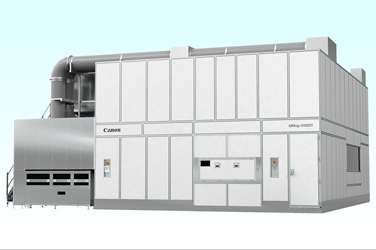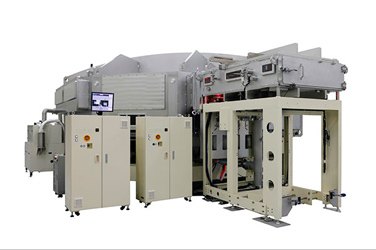5,000 lines, yet as thin as a human hair!
Imprinting: the future of semiconductor lithography
Next-generation semiconductor microfabrication technologyThe Story Behind Nanoimprint Lithography
































 Meeting with the Canon Nanotechnologies staff
Meeting with the Canon Nanotechnologies staff

 Fine-tuning of the nanoimprinting lithography equipment “FPA-1200NZ2C” in progress at Toshiba Memory's Yokkaichi Plant.
Fine-tuning of the nanoimprinting lithography equipment “FPA-1200NZ2C” in progress at Toshiba Memory's Yokkaichi Plant.


